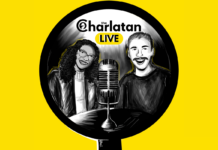
In Lenekuy, Mali, Paul Yaya Traoré found himself grappling with the decision to marry off his daughter.
In a community where girls often left school by Grade 9 for early marriages, Traoré’s perspective shifted after listening to a Farm Radio program that challenged the norm in young girls’ educations.
Stephanie Coucopoulos heard this story shortly after completing her masters degree in education, which struck an interest in access to education for marginalized communities. Inspired by Farm Radio’s story, she knew she wanted to get involved.
Farm Radio is a Canadian non-profit organization dedicated to using community radio to reach rural parts of Africa in ways print media cannot.
But rural farmers in Africa aren’t the only ones who benefit from local radio. Within the Ottawa community, Carleton University’s CKCU-FM, is an independent community-owned and operated radio station that has been telling homegrown stories since 1975.
From communities across Africa to Carleton’s campus, the invisible waves of community radio unite local voices with local ears.
Coucopoulos, now radio resources co-ordinator at Farm Radio, emphasized radio’s unique role as an accessible medium that reaches millions.
“It doesn’t require internet or electricity, making it a reliable source of information for those communities,” she said.
Community radio is thriving across Africa, reaching approximately 45 million rural listeners in 54 languages. With such a large audience, Farm Radio can address topics including art, agriculture, health, gender equality and climate change.
With many young journalists wanting to help reach these rural communities on air, Carleton’s School of Journalism and Communication offers international internship opportunities with Farm Radio.
Adrian Harewood, a Carleton journalism associate professor, hosted a live podcast at Cooperation Canada’s “The Future is Informed” event on Oct. 10. Harewood discussed the power of community radio to foster community change, adding that it can address community needs in ways mainstream media does not.
“Community radio provides marginalized communities, that are often left out of conversations, with a platform to tell their stories, to assert themselves and to contribute to wider conversations,” Harewood said.
While radio is an important global daily resource, Harewood added that it can be especially important for rural communities facing dire circumstances.
“[Radio] can provide life-saving information in moments of crisis,” he said, referring to the critical role local radio played during the Ebola crisis in Sierra Leone.
During that time, he said communities relied on radio to obtain, “survival information on how to deal with [the] killer disease.”
In Western communities, radio fights an entirely different battle: the public’s eroding distrust in journalism. But Harewood said radio is a medium uniquely positioned to mitigate those fears.
“There’s something about the [human] voice … It’s a bit more intimate, something that maybe they can trust more,” Harewood said.
According to Anne-Marie Brugger, CKCU’s interim station director, hearing a local, familiar voice on the air is a big part of community radio’s success.
“As a community radio, we are able to be involved with local businesses, local news stations, local artists and our volunteers,” Brugger said. “It’s everyone coming together for a community effort.”
Entering its 50th year, CKCU has managed to stay on air as an advertisement-free station thanks to a $8.74 per term Carleton student levy, year-round donations and its annual funding drive.
For CKCU and community radio, keeping funding local is as important as keeping the content local.
“Our funding drive helps us connect with our listeners and when we meet our goals, that means there are still a lot of listeners out there,” Brugger said.
According to Harewood, community radio adjusts to community needs in ways mainstream media might not, creating a unique space where community members actively participate in the station’s survival and direction.
“Community radio provides communities that are left out of the conversation with a platform,” he said. “It enables them to tell their story, and contribute to a wider conversation.”
Featured graphic by Alisha Velji.




